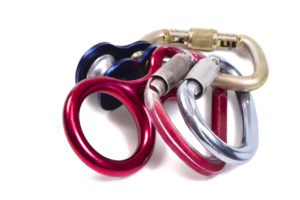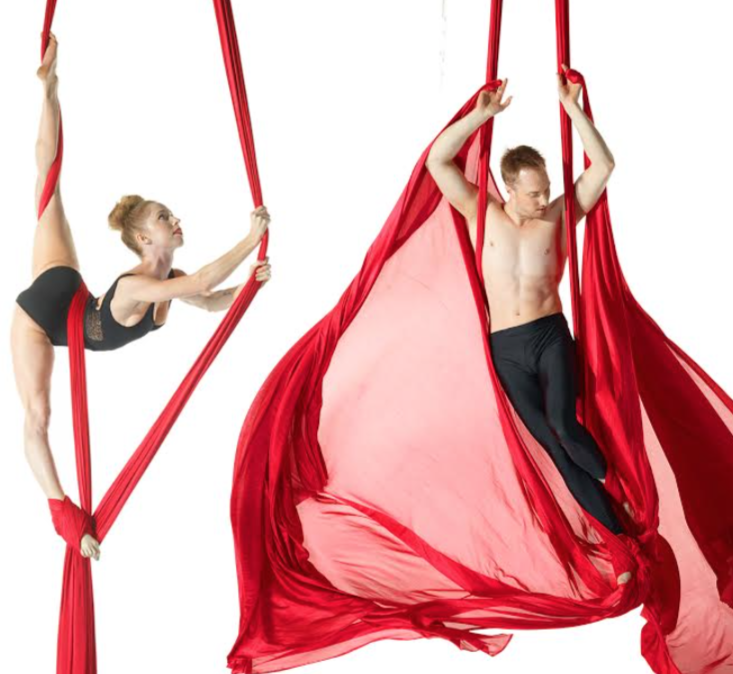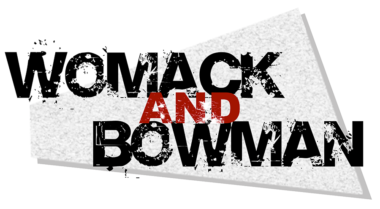
As aerialists and aerial students it is hugely important to have a solid understanding of safety in Aerial Arts. Even if you only train at one reputable aerial studio that has excellent safety practices and are an experienced and confident aerialist, the time may come when you travel and take aerial classes in a foreign country or train on a friends backyard rig.
Would you know an unsafe rigging set up if you saw one?
Safety in Aerial Arts is an extremely extensive topic and Brett and I are by no means declaring ourselves the absolute experts in this area. Our goal here is to give you a general grasp of what constitutes safety in Aerial Arts in the hope that you will feel compelled to dig deeper, do your own research and become as informed, educated and safe as possible.
The 4 Stages of SAFE:
S: Solid Rigging
We are not professional riggers but after more then 15 years in the industry we have learnt to ask ourselves certain questions when training/performing at a new studio or performance space.
Q: How is the apparatus attached to the rigging point? Are there 2 carabiners and a swivel and are they in good condition?
Q: Is the rigging point solid e.g. a steel beam?
Q: Is there a pulley system (for changing out apparatus’) and if so do the pulleys look to be in good condition?

Carabiner/swivel/carabiner/figure 8 example
If you are visiting a new studio or performing at a new venue, reach out to management and find out the last time they did a rigging check, you can also ask them the questions listed above.
A: Aerial Equipment
The fabric used for Aerial Silks is generally 2-way stretch Polyester Lycra or Tricot Nylon. The thickness, color, texture, stretchy-ness and length will vary from studio to studio. Most aerial silks are machine washable, although the fabric does tend to thin out over time, making it susceptible to holes.
It is possible to sew up small holes in your aerial fabrics, extending the life of your silks. Once the hole is larger then a nickel it is a good idea to retire your silks or if you can, cut them shorter and recycle them into an aerial hammock (as long as the hole is in the section of fabric that has been removed).
F: First-Rate Safety Mats
No matter your experience level, it is ALWAYS a good idea to train with a high quality crash pad beneath you:
Yes it is generally true that at a professional level, aerial performers don’t often use safety mats (with the exception of flying trapeze and certain acts that contain release moves) but we perform these acts after many, many years of practice. The training that goes into those difficult moves is extensive and almost always takes place over a crash pad.
Every aerial studio, no matter where in the world it is located, must utilize some type of crash pad. If they do not, we recommend that you find somewhere else safer to train.
E: Equip and Prepare Your Body
The final stage of safety in aerial arts comes down to you.
Are you willing to take responsibility for avoiding injury while training? If so, be sure to do the following:
- Arrive early for class/training
Every body is different; some people can warm up thoroughly in 15 minutes, others take longer. Take responsibility for you’re warm up by setting aside extra time to warm up your shoulders/hips, hamstrings and any ‘problem’ area that needs attention BEFORE your general class warm up.
- Condition
At the gym, local playground, home chin-up bar or rig. Spend time outside of class working on your strength. This will not only help your endurance in the air but will allow you to safely ‘unwind’ yourself should you get tangled (we have all been there!) or make a wrong turn somewhere in a combination. Being strong will help you avoid injury and increase your confidence in the air.

Aerialist Elizabeth Blanchard conditioning
For more information and support around safety in aerial arts be sure to check out the SIAA FB page here and don’t be afraid to ask questions of your aerial mentors, teachers, riggers and equipment suppliers. You can never be too SAFE!







